By Jennifer Welsh
By putting one foot in front of another, these trailblazers have changed Vanderbilt—and the world—with their dedication to basic research and breaking down barriers for themselves and others.
These 10 scientists have blazed new paths through Vanderbilt’s basic sciences departments, even before the establishment of the school itself. Their influence has ricocheted throughout the university, setting a diverse and excellent example for their peers.
Ann Minot
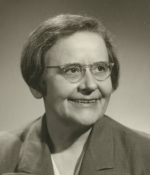 In 1926 Minot joined Vanderbilt as a research assistant in the Department of Pharmacology, but she shifted departments throughout her career. She became the first female full professor in a Vanderbilt basic sciences department—biochemistry—in 1951. Minot directed the Clinical Chemistry Laboratory at Vanderbilt and established and operated the university’s first blood bank.
In 1926 Minot joined Vanderbilt as a research assistant in the Department of Pharmacology, but she shifted departments throughout her career. She became the first female full professor in a Vanderbilt basic sciences department—biochemistry—in 1951. Minot directed the Clinical Chemistry Laboratory at Vanderbilt and established and operated the university’s first blood bank.
Her research interests included hookworm, vitamin deficiency in children, muscular dystrophy, and other aspects of the pathophysiology of disease. She was widely respected and was a skillful and highly effective teacher. She died in 1980.
Masakazu Shiota
 Shiota joined Vanderbilt in 1994 as a postdoctoral fellow studying the role of glucokinase in the regulation of hepatic glucose metabolism and its deterioration in obesity and diabetes. He led his own lab as an associate professor in the molecular physiology and biophysics department for several decades and now works part time as a research associate professor.
Shiota joined Vanderbilt in 1994 as a postdoctoral fellow studying the role of glucokinase in the regulation of hepatic glucose metabolism and its deterioration in obesity and diabetes. He led his own lab as an associate professor in the molecular physiology and biophysics department for several decades and now works part time as a research associate professor.
Shiota created crucial surgical techniques and instruments that propelled the Vanderbilt Mouse Metabolic Phenotyping Center to the forefront of metabolism research, leading to almost 1,000 published papers authored with Vanderbilt researchers and worldwide collaborators. A key apparatus he developed is now referred to as “the Masa” in his honor.
Susan Wente
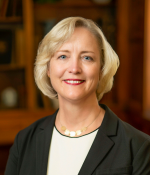 Wente joined Vanderbilt in 2002 as the first female chair of the cell and developmental biology department. She rose in the institutional ranks during her pathbreaking, 19-year career at Vanderbilt, becoming the first woman to lead the university as interim chancellor and the first woman and first life scientist to serve as its provost.
Wente joined Vanderbilt in 2002 as the first female chair of the cell and developmental biology department. She rose in the institutional ranks during her pathbreaking, 19-year career at Vanderbilt, becoming the first woman to lead the university as interim chancellor and the first woman and first life scientist to serve as its provost.
During her time at Vanderbilt, Wente worked to advance opportunities for women across the university and advocated for equity and inclusion in academic affairs. She left Vanderbilt in 2021 to become the first female president of Wake Forest University.
Wente’s research focuses on the nuclear pores that help move proteins and RNA between the nucleus and cytoplasm. She has personally mentored several dozen predoctoral and postdoctoral trainees.
Linda Sealy
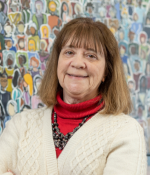 Sealy joined the Vanderbilt faculty in 1986 and attained tenure in 1993. She spent decades highlighting and repairing disparities in Ph.D. attainment and co-directed Vanderbilt’s Initiative for Maximizing Student Development (originally “Diversity”) with Roger Chalkley, the former senior associate dean of biomedical research education and training, since its inception as a postbac program in 2002. In 2017 she became associate dean for diversity, equity, and inclusion for Basic Sciences until she was awarded emerita status in 2020.
Sealy joined the Vanderbilt faculty in 1986 and attained tenure in 1993. She spent decades highlighting and repairing disparities in Ph.D. attainment and co-directed Vanderbilt’s Initiative for Maximizing Student Development (originally “Diversity”) with Roger Chalkley, the former senior associate dean of biomedical research education and training, since its inception as a postbac program in 2002. In 2017 she became associate dean for diversity, equity, and inclusion for Basic Sciences until she was awarded emerita status in 2020.
Sealy mentored more than 150 under-represented minority students. Under her watch, Vanderbilt became one of the top producers of Black Ph.D.’s in biological and biomedical sciences in the country. Sealy, a citizen of Chickasaw Nation, is herself part of a minority underrepresented in science.
Her research focused, in part, on identifying changes that lead to metastatic breast cancer.
Imogene Phelps Earle
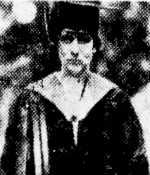 Earle was the first recorded biochemistry program graduate student at Vanderbilt. She got her M.S. and Ph.D. in 1927 and 1929, respectively. She and Howard West Robinson made up the first cohort of doctoral biochemistry graduates. As a student, she worked with Glen Cullen, the first professor and chairman of the biochemistry department, and studied how pH and carbon dioxide levels vary in the liquid portion of the blood of healthy people. She later worked for the U.S. Department of Agriculture and developed a lighter formulation of food rations for horses deployed in World War II, helping to maximize cargo space.
Earle was the first recorded biochemistry program graduate student at Vanderbilt. She got her M.S. and Ph.D. in 1927 and 1929, respectively. She and Howard West Robinson made up the first cohort of doctoral biochemistry graduates. As a student, she worked with Glen Cullen, the first professor and chairman of the biochemistry department, and studied how pH and carbon dioxide levels vary in the liquid portion of the blood of healthy people. She later worked for the U.S. Department of Agriculture and developed a lighter formulation of food rations for horses deployed in World War II, helping to maximize cargo space.
Vivien Casagrande
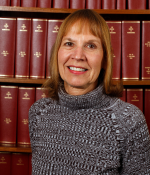 Casagrande’s first paper—published when she was a graduate student—landed in Science. That paper started a long history of influential research. She joined Vanderbilt in 1975 and became a full professor in 1986.
Casagrande’s first paper—published when she was a graduate student—landed in Science. That paper started a long history of influential research. She joined Vanderbilt in 1975 and became a full professor in 1986.
Casagrande was known internationally for her contributions to visual neuroscience. Her work helped explain the organization and evolution of the brain’s sensory systems. She found clues to the evolution of the visual system and added greatly to understanding brain development and plasticity.
Casagrande, who died in 2017, strongly advocated for increasing the representation of women in the Department of Cell and Developmental Biology and was instrumental in bringing key female faculty on board. The Vanderbilt Brain Institute holds an annual Vivien Casagrande Lecture in Systems Neuroscience in her memory.
Michael Fant
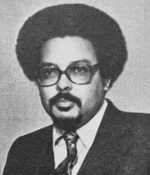 Fant graduated from MIT in 1973 with an S.B. in biology followed by an M.D./ Ph.D. from Vanderbilt in 1980. He was Vanderbilt’s first Black M.D./Ph.D. and first Black Ph.D. in a biomedical science department (biochemistry). During this time, he worked to improve the enrollment and support structure for minority students at the medical school.
Fant graduated from MIT in 1973 with an S.B. in biology followed by an M.D./ Ph.D. from Vanderbilt in 1980. He was Vanderbilt’s first Black M.D./Ph.D. and first Black Ph.D. in a biomedical science department (biochemistry). During this time, he worked to improve the enrollment and support structure for minority students at the medical school.
After graduating, Fant specialized in clinical neonatology and conducted basic research on placental growth regulation. Fant retired in 2019 as professor emeritus at the University of South Florida-Morsani College of Medicine.
Lee Limbird
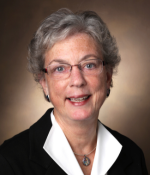 Limbird joined the Department of Pharmacology in 1979. By 1991 she was the first female chair of the department and of Basic Sciences. Under her guidance, the department became one of the top pharmacology departments in the country based on funding, graduate training, and research publication impact. She retired from Vanderbilt after 25 years to pursue her passion for mentoring minoritized scientists, first at Meharry Medical College and now at Fisk University.
Limbird joined the Department of Pharmacology in 1979. By 1991 she was the first female chair of the department and of Basic Sciences. Under her guidance, the department became one of the top pharmacology departments in the country based on funding, graduate training, and research publication impact. She retired from Vanderbilt after 25 years to pursue her passion for mentoring minoritized scientists, first at Meharry Medical College and now at Fisk University.
She and her trainees have been recognized for their discoveries of how a type of cell receptor for adrenaline in the nervous system controls blood pressure, sedation, pain suppression, and sensitivity to opioid drug action, a prelude to the strategic design of new therapeutic interventions.
Antentor Othrell Hinton Jr.
 Hinton’s lab uses 3D electron microscopy to reveal mitochondrial structural roles in diabetes and cardiovascular disease. In addition to being a renowned mitochondrial researcher, Hinton is also a national leader in diversity, equity, inclusion, mentoring, and career development in the biomedical sciences. The second Black faculty member in Basic Sciences, he has guided more than 85 mentees directly and shadow-mentored more than 500. He has championed inclusion through more than 160 speeches, STEM Tea podcast episodes, mentions and features in articles in popular news outlets such as Forbes and CBS News, and articles in leading journals such as Nature and Cell.
Hinton’s lab uses 3D electron microscopy to reveal mitochondrial structural roles in diabetes and cardiovascular disease. In addition to being a renowned mitochondrial researcher, Hinton is also a national leader in diversity, equity, inclusion, mentoring, and career development in the biomedical sciences. The second Black faculty member in Basic Sciences, he has guided more than 85 mentees directly and shadow-mentored more than 500. He has championed inclusion through more than 160 speeches, STEM Tea podcast episodes, mentions and features in articles in popular news outlets such as Forbes and CBS News, and articles in leading journals such as Nature and Cell.
Jennifer Pietenpol
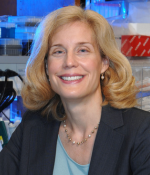 Pietenpol was in the first graduate class of the cell biology department (now cell and developmental biology), earning her Ph.D. in 1990. She returned to Vanderbilt to the Department of Biochemistry in 1994, achieving the rank of full professor in 2002.
Pietenpol was in the first graduate class of the cell biology department (now cell and developmental biology), earning her Ph.D. in 1990. She returned to Vanderbilt to the Department of Biochemistry in 1994, achieving the rank of full professor in 2002.
Throughout her career, she has been appointed to top researcher and administrator roles, including director of the Vanderbilt-Ingram Cancer Center, member of the National Cancer Advisory Board, a chief scientific advisor for the nonprofit breast cancer organization Susan G. Komen, and chief scientific and strategy officer at the Vanderbilt University Medical Center.
Her primary research interests include triple-negative breast cancer and the p53 gene. During her tenure at Vanderbilt, she has trained more than 60 scientists and students, including more than 25 early-career faculty members.